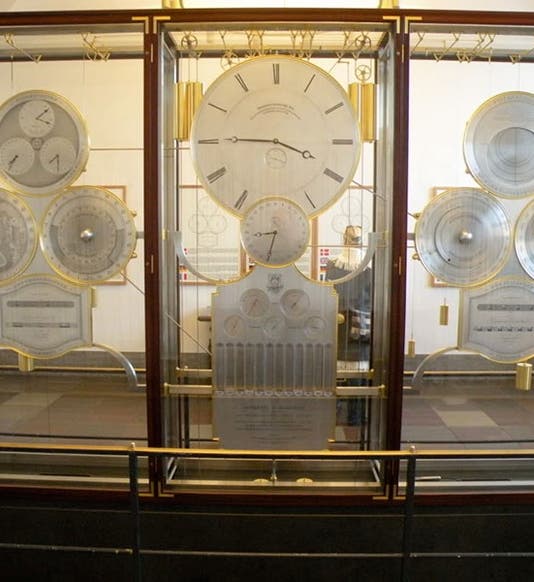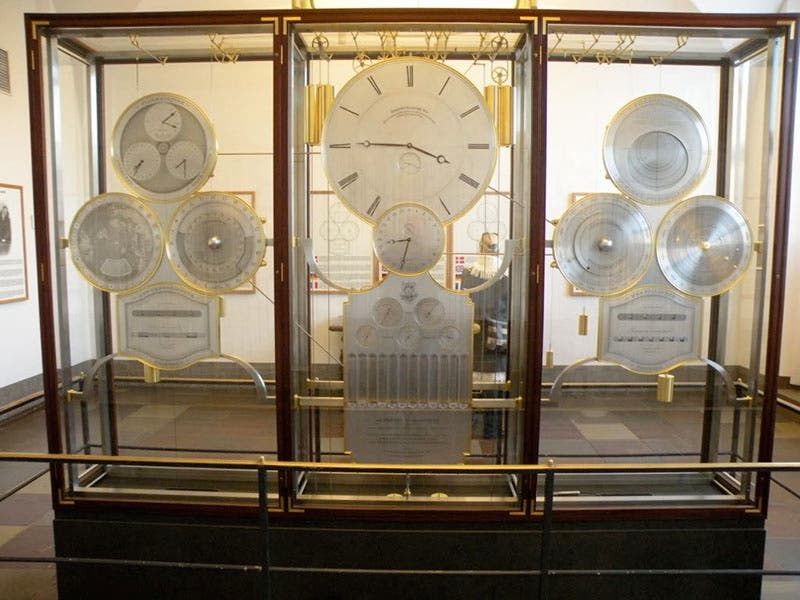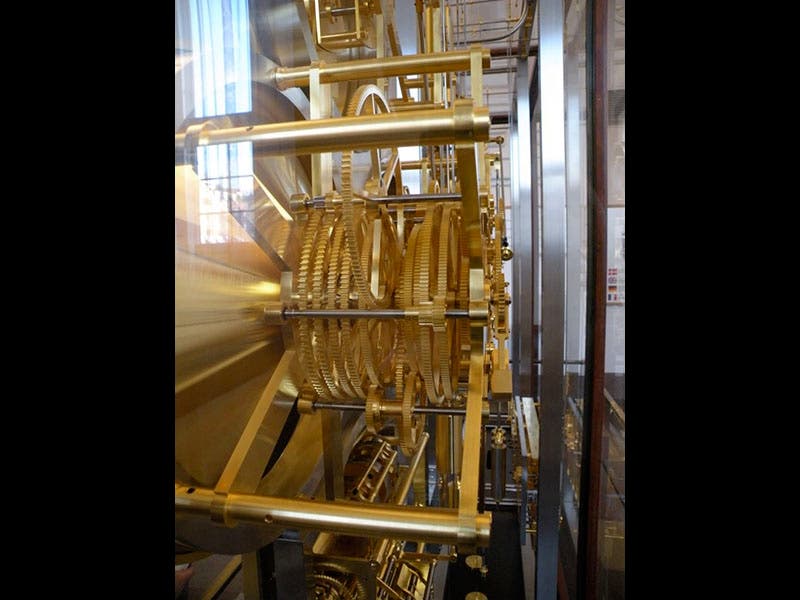Scientist of the Day - Jens Olsen
Jens Olsen, a Danish locksmith and clockmaker, died Nov. 17, 1945, at age 73. As a young man, Olsen saw the famous Strasbourg clock, and he dreamed thereafter of building such an astronomical clock for Denmark. However, it was not until he was 50 years old that he completed the necessary calculations, and he was 71 before he found the financial support to actually start construction. At that point he was only two years from his deathbed, so he never got to see the Copenhagen "World Clock", which ticked its first tock on Dec. 15, 1955. The clock sits in a glass case in the city hall in Copenhagen (see second image above, with a rare Pedersen bicycle in the foreground), and unlike the clock in the Strasbourg cathedral, which has several of its faces high up and its innards screened from view, Olsen's clock is right there at eye level, and you can admire the three panels and 11 separate clockworks and the beautiful dials on the front (first image), and then walk around to the back and be dazzled by the thousands of gold-gilt gears, bearings, and linkages in open view (third image; see the fifth image for a detail). Olsen himself is credited at the bottom of the central clockwork (sixth image).
The various dials show such parameters as Copenhagen time, solar time, time around the world, sunrise and sunset time, future lunar and solar eclipses, a perpetual calendar, and the current positions of the planets (right dial in fourth image). Interestingly, Olsen's planetary dial tracks the motion of only 8 planets--there is no Pluto, even though in 1955, Pluto was generally accepted as the 9th planet. Either Olsen did his planetary calculations before 1930, when Pluto was discovered, or he had a premonition that Pluto’s planetary days were numbered, as indeed they were.
The top dial in the fourth image shows the position of the stars for the current date. Here is where the clock's slowest-turning gear comes into play. Since the position of celestial north changes during a cycle of almost 26,000 years, something has to slowly "precess" the star map over that period. So somewhere among the clock’s 15,448 parts is a gear that rotates once every 25,753 years. In its first 60 years, it hasn’t moved very far.
All of the photos above were taken by Bill Robertson, a Kansas City miniature craftsman and precision tool collector. You can see more of his photos of the World Clock on a post on the Practical Machinist forum some years ago.
Dr. William B. Ashworth, Jr., Consultant for the History of Science, Linda Hall Library and Associate Professor, Department of History, University of Missouri-Kansas City. Comments or corrections are welcome; please direct to ashworthw@umkc.edu.












